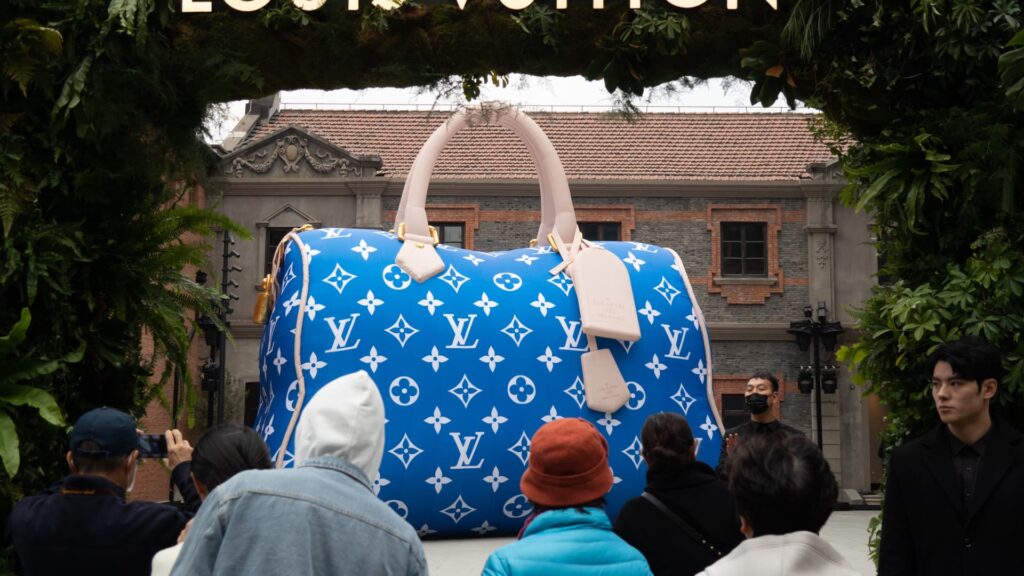A view of a scaled-up mock of a Louis Vuitton bag during a promotional event by the French luxury brand in Shanghai on Dec. 4, 2023.
Future Publishing | Future Publishing | Getty Images
BEIJING — China’s luxury sales are rebounding, and while they’re not back to 2021 levels yet, industry analysts and financial releases from major brands point to new growth opportunities versus pre-pandemic trends.
LVMH was the latest luxury giant to announce 2023 results on Thursday, and noted that fashion and leather goods saw growth of more than 30% in China in December.
The company’s results showed that despite some resumption of overseas travel, more of China’s consumers are buying luxury products at home.
“Regarding the size of stores in China … there are twice as many Chinese customers as in 2019,” Bernard Arnault, chairman and CEO of LVMH, said on an earnings call, according to a FactSet transcript.
“It means that the domestic purchase in China has grown significantly, so we have to meet that,” he said.
The mainland China personal luxury market grew by about 12% last year to more than 400 billion yuan ($56.43 billion), according to consulting firm Bain & Company.
While that’s still not back to 2021 levels, due to soft consumer sentiment and the resumption of some overseas luxury shopping, Bain expects the domestic luxury market to only grow in the coming years.
Luxury purchases in mainland China accounted for about 16% of the global market last year, and is expected to reach at least 20% in 2030, said Weiwei Xing, a Hong Kong-based partner at Bain’s consumer products and retail practices in Greater China.
“All of that data points to the importance of the Chinese luxury consumer and the China market,” she told CNBC.
Cartier parent Richemont said earlier this month that sales in mainland China, Hong Kong and Macao grew by 25% in the three months ended Dec. 31.
In an earnings call, the company’s CFO Burkhart Grund described the Chinese business overall as “rebuilding,” especially…
Read the full article here





